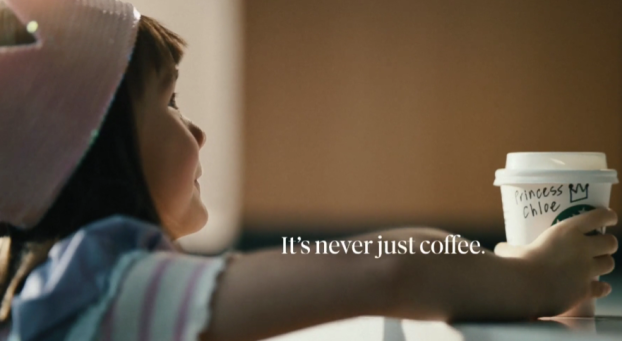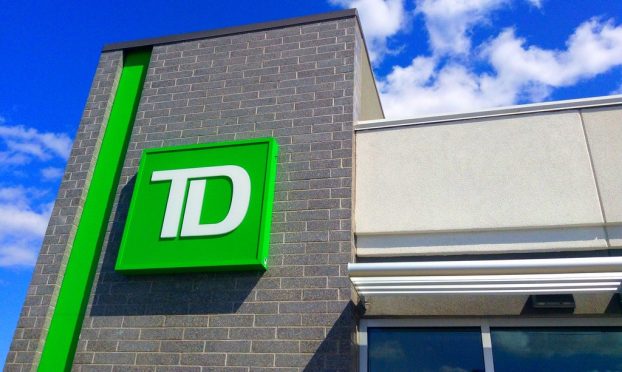The last Saturday in September, Globe and Mail readers came across a full-page colour ad which declared: ‘This weekend, life’s richer.’ The ad listed a hat-trick of events happening that weekend in Toronto with two things in common: they featured Scotiabank as title sponsor, and they were all unprecedented successes.
Scotiabank Nuit Blanche, that ‘all-night contemporary art thing,’ saw attendance numbers double over the year before. The winner of the Scotiabank Toronto Waterfront Marathon, Kenyan John Kelai, broke the Canadian record. And
standing-room-only crowds gathered to hear 2006 Scotiabank Giller Prize winner Vincent Lam and eco-guru David Suzuki speak on the Scotiabank Bestsellers Stage at the Word on the Street festival. All three were covered heavily by local and international media, and you would have been hard pressed to find a Torontonian who didn’t attend at least one. Welcome to the Scotiabank clean sweep.
Rather than take full credit, however, Scotiabank VP domestic marketing Rick White is modest. ‘If I said it was all well thought-out in advance, I’d be lying,’ he laughs. ‘There’s a lot of good luck here.’
While the weekend was exhausting for organizers and volunteers alike (not to mention for those of us who were up for 48 hours), it also marked a pinnacle in the engagement marketing efforts of Canada’s third-largest bank (in terms of assets). For the first time, Canadian bank marketing was fun.
‘Increasingly, you find big brands which are thought of as being somewhat vanilla and static – not things that people have a passionate relationship with – trying to find appropriate properties that allow them to engage potential customers in an environment that’s all about passion,’ says admirer Andy MacCaulay, president of Toronto-based agency Zig.
Amid intense Big Five competition, Scotiabank’s original goal was to differentiate the brand and get it out there to as many Canadians as possible – all on a budget about one-half to one-third the size of that of Royal Bank or TD Canada Trust. ‘It’s a category that hasn’t got a lot of engagement, so it makes it hard to break through in the marketplace. It’s hard to build a strong brand, certainly,’ says White, who has been with Scotiabank for 13 years. ‘Among the things we have learned over the last little while is because of the nature of this non-engagement, we need to find ways to drive engagement in non-traditional ways.’
Entertainment, then, is a perfect fit with the bank’s optimistic brand positioning under the tagline: ‘You’re richer than you think.’ Scotiabank has worked to position itself as ‘un-banklike’ in everything from its self-deprecating humour to the more informal art direction on the Cassie
award-winning integrated campaign by Toronto agency Bensimon Byrne, which wrapped in March of last year.
‘The initial launch [three years ago] was based on the functional attributes of ‘You’re richer than you think,’ how a few small moves in the way you do your finances can save you 53 bucks a month,’ says Bensimon Byrne CD David Rosenberg, who was on the team that won the Scotiabank account in 2000. ‘Whereas with the experiential strategies and sponsorships, we’re leveraging the emotional side, life’s experiences, and how a bank can play a role in that.’
It is this emotional aspect that the brand has been mining over the past year. The ‘richer life’ for Scotiabank means movies, books, causes and, of course, hockey. ‘You don’t have to have a lot of money to enjoy these sports, arts and cultural things,’ says White. ‘We’re looking for sponsorship opportunities that are accessible to everybody.’
And they’ve found them. Over the past two to three years, Scotiabank has been affixing its name to sporting and arts venues (Scotiabank Place in Ottawa, Scotiabank Theatres in Toronto, Montreal, Calgary, Edmonton and Vancouver), entertainment and sports events (NHL and Hockey Night in Canada, CFL and the Grey Cup, Nuit Blanche), charity events (the Waterfront Marathons in Toronto and Vancouver, Rick Hansen’s Wheels In Motion program and the AIDS Walk for Life across the country, Toronto’s Rat Race, Buskerfest) and awards (the Giller Prize), as well as the category’s first entertainment loyalty program, Scene, in partnership with Cineplex.
‘The programs have enough breadth that we are appealing to hopefully everybody in some way,’ says White. ‘Whether it’s the Giller or whether you’re a marathoner or a hockey enthusiast, there’s going to be somewhere we’re going to touch you. It will take time to really bring to the forefront how we’re going to drive these things, but we’re starting to see some good synergies.’
In the Globe ad, some of the many strands of this broad program were tied together into a pretty impressive bow on a gift from Scotiabank to Toronto. Scotiabank aims for a similar impact in all major Canadian cities, and as impressive ROI has earned White and his team the support of CEO Rick Waugh, it seems Canadians appreciate a little entertainment with their banking.
‘The key thing is the top-of-mind awareness Canadians have about Scotiabank,’ he says. ‘Where are we on their list if they’re going to be switching financial institutions? Will they think of us or not? Are we first on their list or not?’
The secondary gauge is market growth. White won’t disclose actual numbers, but he says that in the Ottawa region, for example, where Scotiabank sponsors the Ottawa Senators and has naming rights on their arena, Scotiabank Place, market share has increased by double digits to make it the bank’s strongest market outside Atlantic Canada. Similarly, the Scene program has brought a younger demographic to the bank in larger numbers. Overall the bank’s market share is around 12% nationally, with household penetration of approximately 20%.
‘It’s tough to drive growth in Canada – our market share moves glacially,’ says White. ‘But we’re looking for some steady gains, which we have seen over the last four or five years. It’s not incredible, but it’s steady; we’re getting better retention of our current customers and a bit better overall.’
White has been getting plenty of sponsorship proposals, but he is looking to develop those already on the roster to spur growth. Scene, for instance, which piloted in Toronto in January and rolled out across the country in May, has 450,000 members, one-third of whom are Scotiabank customers. The points-for-movies program, targeted at 18- to 34-year-olds, offers a membership card to everyone, and debit and VISA cards that earn points faster. According to White, the only loyalty programs in Canada more popular in terms of online hits are Air Miles and Aeroplan. But that’s just the beginning.
‘We have to look at those [core properties] with a lot of discipline and truly leverage them,’ says White, adding that the program will expand next year to include restaurants, telcos, technology and music download partners. The partnership with Cineplex will be integrated with the NHL partnership, as league games are played on Scotiabank’s silver screens. This fall’s season of performances from the Metropolitan Opera in New York will also be framed by the branded media environment inside the Scotiabank theatres.
All of this external goodwill has internal benefits as well. White credits Scotiabank’s 21,400 employees in 970 branches across Canada with identifying the properties worth investing in.
‘Our strategy has been built up from the grassroots,’ he says. (Scotiabank has also won awards for its Applause employee recognition program.) ‘We’ve taken on things that have the most resonance and relevance to our people.’























